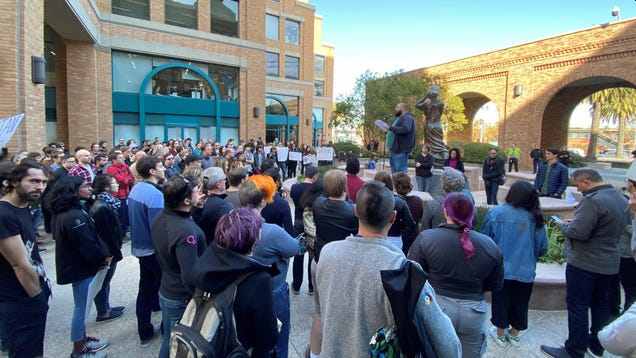Laid-off temp tech workers and H-1B visa holders have 60 to 90 days to find new jobs to avoid deportation as tech layoffs exceed 140,000

Temporary workers play a vital role in the growth of the US economy. Although temporary workers account for just 2 percent of total nonfarm employment in the United States, companies, small and large, have increasingly relied on temp workers to support their operations to meet the ever-growing demand for their products and services.
According to data from Statista, temporary and contract staffing employment amounted to about 13.6 million. In the past 3 years, tech companies like Google, Meta, Microsoft, Salesforce, and Stripe have sponsored 45,000 H-1B tech workers. Most of these tech giants rely on engineering talent from India, China, and other countries around the world to maintain a competitive edge in a fast-moving tech industry.
According to the USCIS, an H-1B is a temporary visa that allows US companies to hire foreign professionals to “perform services in a specialty occupation.” The US currently allows a maximum of 65,000 H-1B workers per year who are permitted to stay between three to six years.
However, as tech layoffs swept across the nation, at least 140,000 tech workers have lost their jobs, according to Layoffs.FYI, a site that has been tracking all tech layoffs since COVID-19 using data compiled from public reports.
There are currently no data about the number of affected laid-off temp tech workers. But Bloomberg reported that recent layoffs by Meta and Twitter affected about 350 immigrant workers. Twitter alone employed as many as 700 H-1B temporary tech workers before Elon Musk’s layoffs started last month.
Now, these laid-off temp tech workers and H-1B visa holders have 60 to 90 days to find new jobs here in the US to avoid being deported to their native countries.
“It’s this amazing talent pool that the U.S. is fortunate to attract, and they’re always living on the edge,” said Sophie Alcorn, an immigration lawyer based in Mountain View, California, who specializes in securing visas for tech workers. “Many of them up are up against this 60-day grace period deadline. They have a chance to find a new job to sponsor them, and if they can’t do that, they have to leave the U.S. So it’s a stressful time for everybody.”
The global economic downturn that started in the second quarter of this year is beginning to have a major impact on tech companies. As we reported last month, over 85,000 tech workers lost their jobs in July. That number has since climbed to about 41,000 in the first week of September, according to the latest tally from CrunchBase, a platform for finding business information about private and public companies.
In recent months, tech companies, crypto exchanges, financial firms, and banks have reduced their headcount and slowed hiring as global economic growth weakens due to looming recession, inflation, higher interest rates, the energy crisis in Europe, and the ongoing war in Ukraine.
Meanwhile, the US tech layoffs may persist for the foreseeable future after the report of new inflation data. Yesterday, the six largest U.S. tech companies lost over $500 billion in just one day of the stock market rout. Apple, the world’s most valuable public company, suffered the most loss closing at $153.84 for a loss of just under 6%. The carnage didn’t stop there. Microsoft lost over 4%, Meta Platforms down more than 7%, and chip giant Nvidia shed 9.5%.

